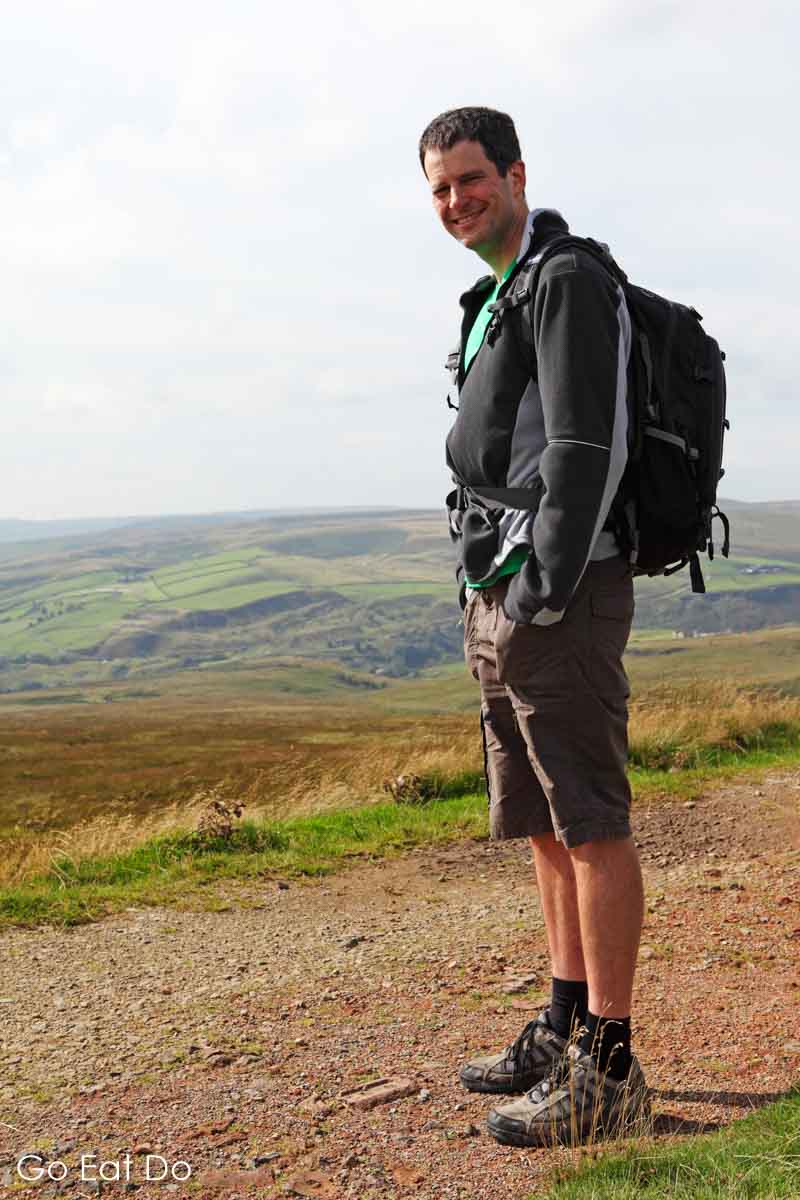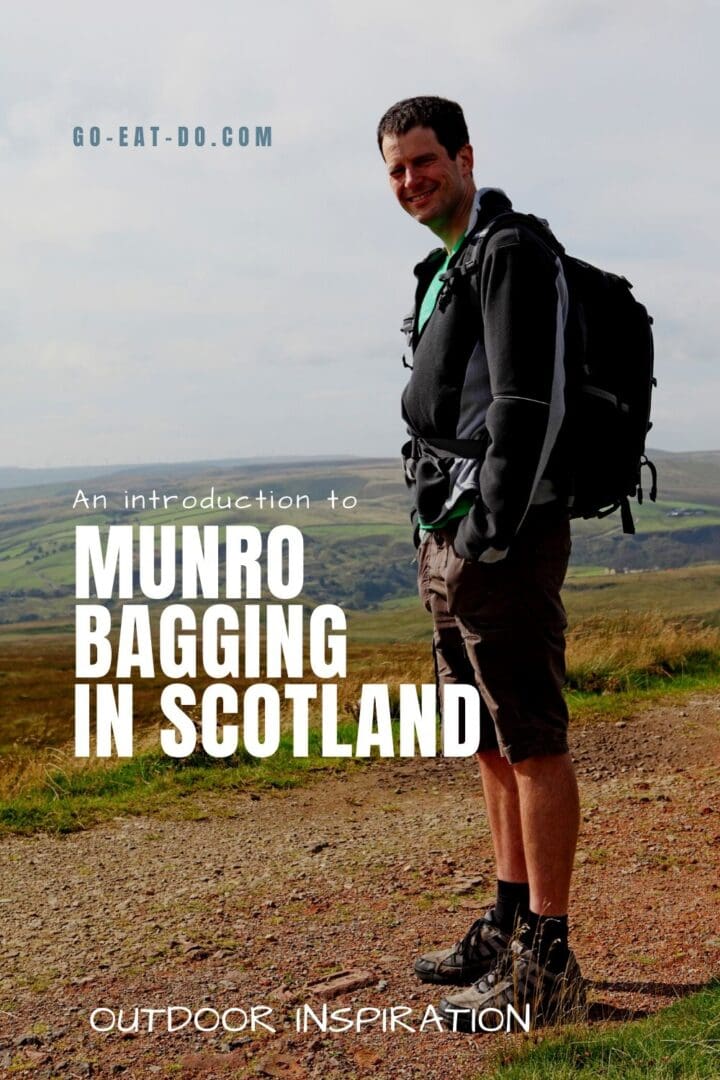Stuart Forster talks with outdoors enthusiast and mountaineer Matthew Stewart to get an introduction to Munro bagging in Scotland.
Disclosure: Some of the links and banners below are affiliate links, meaning, at no additional cost to you, I will earn a commission if you click through and make a purchase.
What is a Munro? That seemed a pretty basic first question but this interview came about spontaneously, while out walking. I’d had no opportunity to conduct research into the topography of the Scottish Highlands.
The Scottish Mountaineering Club’s definition of a Munro, explained Matthew, is a mountain in Scotland whose summit is above 3,000 feet (914.4 metres).
Matthew has walked or climbed to the peaks of all of the Scottish Munros and is consequently regarded a Compleatist. He’s Compleatist number 5191.
Of course, I was duty bound to ask how many Munros are in Scotland. On answering this question, Compleatist 5191 gleamed with obvious pride. There are 282 distinct Munros, he explained, plus 227 ‘subsidiary tops’. Those, he clarified, are peaks above 3,000 feet but below a mountain’s summit.
Munro bagging in Scotland
Matthew explained that what he has done is known as Munro bagging. Essentially he was a collector, ticking off a list of peaks. He loves the outdoors and one of his hobbies is mountaineering. Bagging the Munros provided a reason to travel to remote parts of Scotland.
Sometimes known as Munroists, Munro baggers are climbers and outdoor enthusiasts who have been to the summits of all of Scotland’s mountains with peaks above 3,000 feet.
The Munros of Scotland
The Munros are peaks named after Sir Hugh Munro, the founder of the Scottish Mountaineering Club. He published Munro’s Tables, a list of 538 summits, in 1891.
Over time, the number of peaks identified as Munros has changed. The chief reason is the improved accuracy of measurements made by the Ordnance Survey. In 2012 Beinn a’Chlaidheimh, in Wester Ross, was stripped of its status as a Munro because it rises ‘just’ 914 metres above sea level; slouching more than a foot under the 3,000ft qualifying criteria.
Matthew lives in West Yorkshire and bagged his final Munro on 6 October 2012. That peak was Stob Binnein near Crianlarich. It took him 23-and-a-half years to visit the summits of all of the Munros.
Every Compleatist, a term alternatively known as Compleationist or Munroist, is listed on the Scottish Mountaineering Club website. The first named Munroist is A.E. Robertson. He achieved that status in 1901. The next person to complete the full list of Munros did so in 1923.
Frequent travel to Scotland
“My first was in February 1989 — Bidean Nam Bian in Glen Coe — and in 1995 I thought ‘I can do this’. I got a car and my friend, Paul Wesson, was also keen. We went up frequently until 1999…For a number of years I was then down to one trip a year, for a week. The last two years saw real focus,” explained Matthew about his Munro bagging.
“It’s often really beautiful; sometimes breathtaking,” he said about viewing the scenery from the peaks of the Munro mountains.
Part of the attraction is the remoteness of the peaks in the Scottish Highlands. “The far north is, for western Europe, very sparsely populated and to go into these areas is a real privilege, a feeling that you will not see anyone. You are on your own, even if with others, and that is very different to normal life,” he added with a palpable sense of awe.

Safety in the Scottish highlands
Compared to the mountains of central Europe, the Munros are not high. However, their challenges should never be underestimated.
“Even on a good day there is the physical element. It can be very hard work. You are responsible for your own safety. Especially in winter it can be very exciting indeed and sometimes a relief to get down,” says Matthew about climbing the Scottish Munros.
Munro bagging for beginners
Matthew said he thinks anyone with reasonable basic fitness can start bagging Munros. His advice to beginners is that it’s best to start with an experienced Munroist.
“A standard day is not that arduous, normally six hours walking, mostly paths, two hills and perhaps a bit of scrambling but nothing of note. Further north, it’s much more remote, sometimes it can mean a bike ride on a track, often river crossings; it all requires much more care. Both can be affected by clouds, rain and wind. Winter can be very tough with big wind chill. Ice and snow can make crampons and an ice axe essential. You’ve got to have faith in yourself and your equipment,” he explains.
The Corbetts and the Grahams
When someone has bagged all of the Munros other challenges await. It could mean it’s time to tick off each of the Corbetts, which rise between 2,500 to 3,000 feet (762 to 914.4 metres). Alternatively, it might mean the Grahams, whose summits are at altitudes between 2,000 to 2,500 feet (609.6 to 762 metres).
Compleatist 5191 admits that he experienced a sense of satisfaction mixed with a touch of disappointment that his quest was over while on Stob Binnein. He’s not looking to bag the Corbetts or the Grahams. Instead, he’s going for all of the Munros again. “This time there’ll be less pushing on in the rain,” he says.
Books about Munro bagging
Thinking about walking in the Scottish Highlands and contemplating becoming a Munro bagger? You may find the following books useful.
The Munro Logbook and Journal lists all 282 of the Scottish peaks:


Cicerone’s Walking Loch Lomond and the Trossachs features 70 walks, including 21 of the Munros:



Further information
See the Scottish Mountaineering Club and Visit Scotland websites for information about activities in the Sottish Highlands.
Thank you for reading this article about Munro bagging in Scotland’s highest mountains. Here’s a look at a far more mainstream aspect of Scottish tourism, Edinburgh Castle.
If you enjoyed this post why not sign up for the free Go Eat Do newsletter? It’s a hassle-free way of getting links to posts on a monthly basis.
‘Like’ the Go Eat Do Facebook page to see more photos and content.
A version of this post was initially published on Go Eat Do on 22 April 2013.



